
The Northern Cape is South Africa’s biggest province and stretches over a variety of astonishing landscapes, from the cool, character-filled West Coast, across the succulent Nama-Karoo towards the Orange River oasis and then upwards into the drier red dunes of the Kalahari Desert.
There are no fewer than six National Parks to visit in the province, two of the country’s biggest rivers and splendid natural wonders like the Riemvasmaak Hot Springs, the 56-metre high Augrabies Falls, spectacular night skies and the ever-popular winter rainfall season, when the radiant blooms spill across the countryside. Here are our top photo spots in the Northern Cape that you simply cannot miss.
1. Find peace at Papkuilsfontein Guest Farm in Vanrhynsdorp
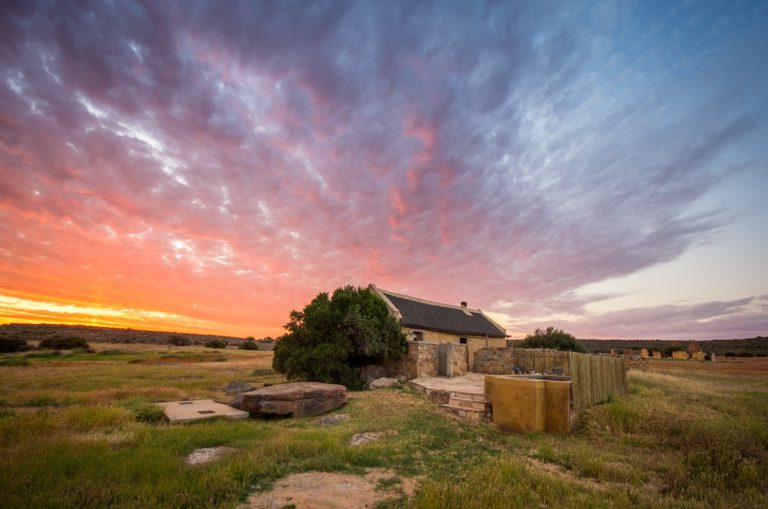
Papkuilsfontein in the Northern Cape is a quintessential Karoo Farm Stay. Photo by Melanie van Zyl
There’s an authentic farm feel to this patch of paradise close to Niewoudtville. Stay in the old, beautifully restored stone cottages in your own private fynbos setting to best appreciate the big skies and wide spaces of the Northern Cape. Parts of Papkuilsfontein have been managed as flower reserves for many years and a flower route has been developed on one side of the farm, taking you through renosterveld and some fynbos, where a profusion of annuals and endemic bulbous plants grow during the winter months. This is when the farm is at its most popular, but it is absolutely worth a visit in the low season too.
Do it: Staying at one of the restored cottages at Papkuilsfontein costs from R500 per person self-catering and the delectable two-course dinner is R230 (you absolutely need to try their dine-in option).
Also read: Tips for photographing flowers
2. Feel the force of water at Augrabies Falls National Park

The Augrabies Falls at sunset. Photo by Melanie van Zyl
There’s a distinct calm and isolation about the desert areas in South Africa, but Augrabies is the one place where water cuts right through it all and makes an almighty noise about it. A rambling trail at the main rest camp links a series of viewpoints to see the Orange River, but the best way to experience this spot is to spend sunset at the quiver trees just beyond the reception then make your way to one of the decks and appreciate the falls at night – the best time is around 19:30 just before the lights go on (every evening between 20:00 and 22:00) so you can best see the stars pricking the darkness above.
Do it: Stay in the main rest camp to see the falls lit up. From R910 for a chalet for two.
3. Anywhere on the Orange River
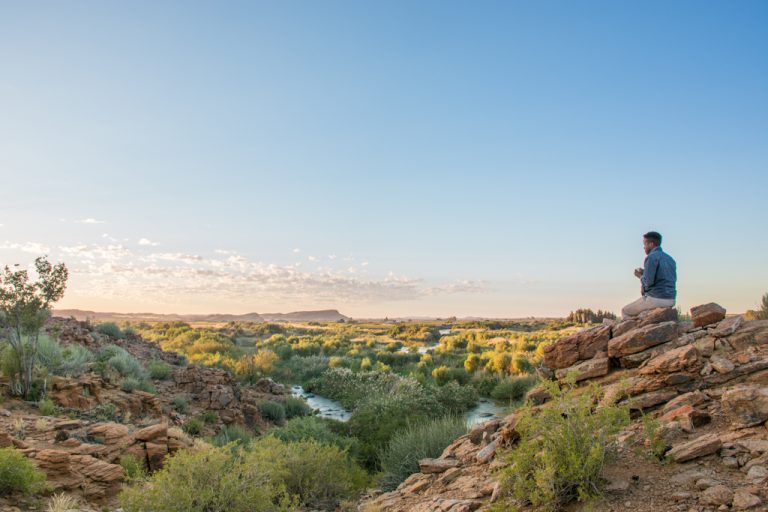
Looking out over the Orange River in Kakamas. Photo by Melanie van Zyl
An oasis in the Northern Cape, this mighty river cuts through a rugged landscape bringing it to life. Stop anywhere along the river and find beauty. However, the best way to experience the river is to jump right in and paddle it! My favourite part about rafting this river is sleeping out in the open at night. There are not many places where you can skip the tent these days. Wake up everyday at sunrise, catch the pink hues and feel the peace of the water.
Do it: From R4250 per person for a four-day adventure (minimum six people) with Umkulu Adventures.
Also read: Why the Orange River is one of the best family trips in the world
4. Camp in the Namaqua National Park

Perfection in Namaqualand. Photo by Teagan Cunniffe.
During early August and September, seemingly overnight, the dusty valleys of Namaqualand are transformed into a wonderland, carpeted with wildflowers that draw visitors from around the country and from abroad. Chris Davies took a roadtrip up the West Coast avoiding tar as much as possible, and he says it best: “Namaqua National Park is the last stretch of wild coastline before the mine-ravaged desolation further north. There are fewer bays and flatter hills here than to the south, with steenbok replacing the sheep between the bushes. The park’s simple ablutions, small clutches of stands and untouched beaches are accessible only by a single, very sandy 4×4 track, making it hard to get to but worth every effort. It led us through a sea of flowers, past tortoises and behind road-hogging ostriches and their skittish, twittering chicks.”
Do it: Groen River Camp Site is just south of the Groen River estuary. The campsites are close to a rocky shore, with sandy beaches just south of the lighthouse, and north at Groen River Mouth. Stands are R145 per night (six per stand) at Groen Rivier camp. Park fees R37 per person.
Also read: A road trip up the West Coast off the N7
5. Soak up the Sutherland night sky
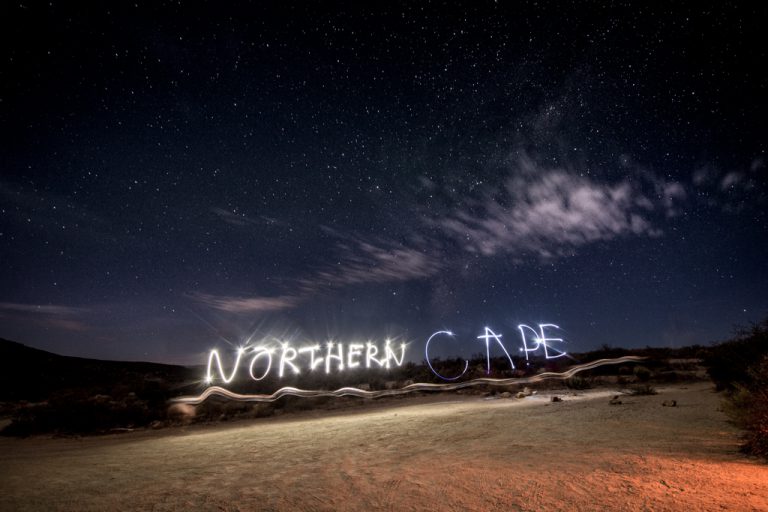
The Northern Cape sky. Photo by Melanie van Zyl.
Local lore has it that they even changed the colour of the streetlights from bright white to yellow in Sutherland to better enhance the stargazing. Peering through a telescope to see the rings of Saturn or spot the red flecks of the Jewel Box is a great experience, but somehow looking at space through a telescope, even a good telescope, can be a bit of let down – images taken from satellites and space telescopes completely outcompete reality in terms of colour and clarity. However that’s not really necessary, as in Sutherland you can see about 2500 stars with the naked eye. There’s something about that infinite canopy of light that offers some serious perspective and can only be experienced here in the Cape Karoo. It’s humbling, and on a farm just outside Sutherland all you need to do to feel this is turn off the lights and look up.
Do it: Saffraan Cottage is from R500 per person and an observatory tour of the South African Large Telescope is R80.
6. See the longest gravel road in SA – Calivinia to Ceres
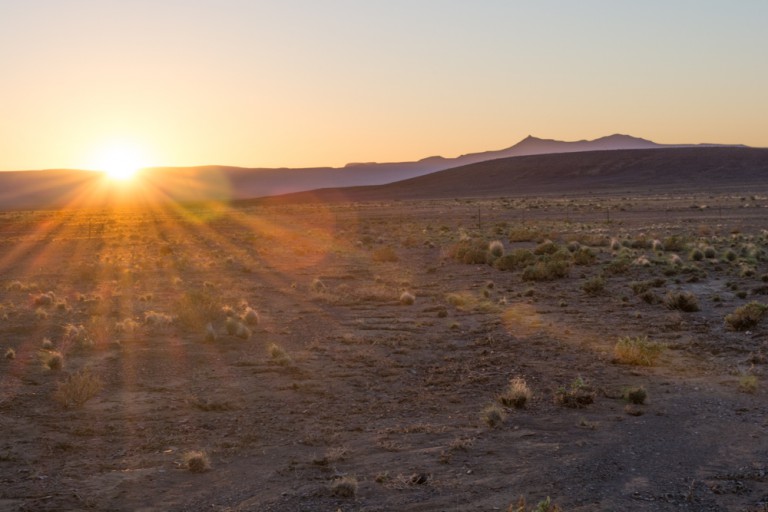
Wide open spaces along this stretch of gravel give you the space and time to think.
The longest gravel road in the country is a stretch of over 200 kilometres between Calvinia and Ceres. You can drive it (make sure to pack spare tyres) or you can walk it. Those who had also walked the famous Camino de Santiago say the Tankwa version is much tougher. In Spain, you can stop walking when you’re tired and rest in the nearest hostel, but here you have to walk the 25 kilometres to camp. The terrain is much more rugged, it’s hotter, and at the end of it all you have just a five-litre bucket of water with which to wash yourself.
Do it: Read how to walk the Tankwa Camino here – 250km in 10 days down the longest gravel road in the country. It costs R5500 a person to join the Tankwa Camino – this covers infrastructure costs, water (hot and cold), dinner, fresh fruit along the walk and afternoon treats served with tea and coffee plus the return transfer from Ceres to Calvinia. For more info, visit Tankwa Camino website.
Also read: The colours of Calvinia
7. Visit SA’s newest National Park – Mokala National Park
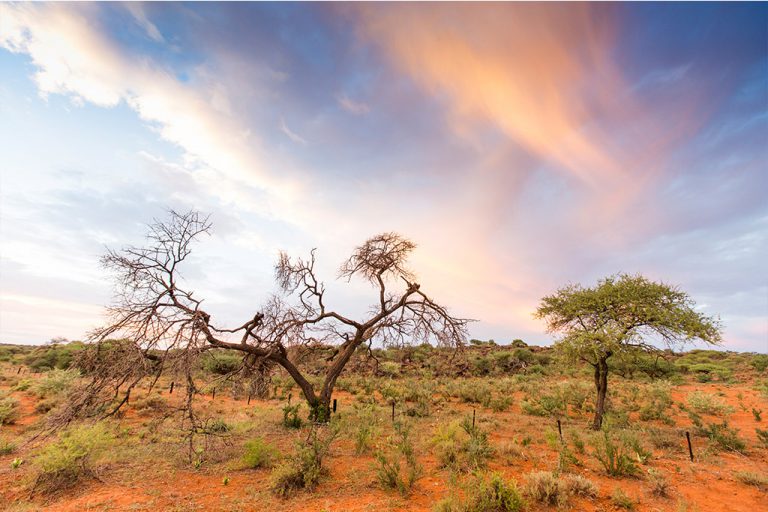
Beautiful dawns greets us at the Mokala camping site. Photo by Teagan Cunniffe.
Mokala National Park is about 70 kilometres south-southwest of Kimberley and is best known for harbouring endangered species like sable, roan and tsessebe, aardvark and the tiny aardwolf. Go for a game drive. Mosu Lodge offers four game drives each day: in the early morning, during the day, at sunset and at night, and there’s an option to view old rock engravings that are about 2000 years old. Enjoy a catch-and-release fly-fishing session if you’re staying at Lilydale Rest Camp.
Do it: Options range from camping to luxury bungalows. Mosu Lodge, the main rest camp, has a pool and 15 units with air-con, from R700 for two. Lilydale Rest Camp has 12 self-catering units that include bungalows and chalets, from R790 for two. Haak en Steek Cottage is more luxe and offers family-friendly units, from R1080 for four. Motswedi Camp Site is from R430 for a site for two people. Conservation fees are R37 per day for adults and R19 for under-11s. Don’t forget your Wild Card! Bookings and more information available on the Mokala National Park website.
Also read: 5 things everyone should do at Mokala National Park
8. Get wild in the Kgalagadi Transfrontier Park
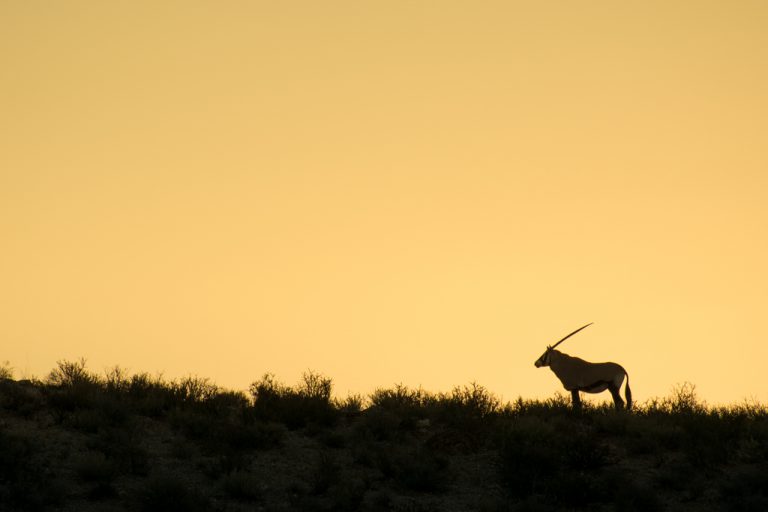
A majestic Oryx stands sentry at golden hour. Photo by Melanie van Zyl
This is a place where only the toughest survive. The immense landscape of the park stretches across South Africa and Botswana covering over 3,5 million hectares – almost twice the size of the Kruger National Park. There are 19 predator species including leopard, cheetah and both species of hyena. Plus, two-thirds of the raptor species in southern Africa can be seen here in the Kalahari. Other desert specials include the highly vocal barking gecko, adorable meerkats and the tiny tree mouse which lives in the Camel-thorn trees.
From March to May is prime game spotting time. It’s the end of the wet season and the riverbeds attract many animals. May to August has the most comfortable weather with warm days and chilly evenings. Want to see a kill? Go in January and February when there’s plenty of young after good rains.
Do it: Nossob Rest Camp has a waterhole that’s lit up at night and brand new accommodation opening up soon. From R995 for two in a chalet.
Also read: First-timer’s guide to the Kgalagadi
Read the full story in the August 2017 issue of Getaway magazine.
Our August issue features 14 Northern Cape treasures, a trip along Mozambique’s pristine beaches on a fat-bike, holidays to take if you want to learn a new skill and so much more.
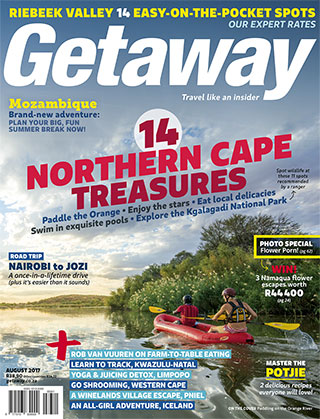
This article, 8 top photo spots in the Northern Cape, was originally posted on the Getaway Blog by Melanie van Zyl.